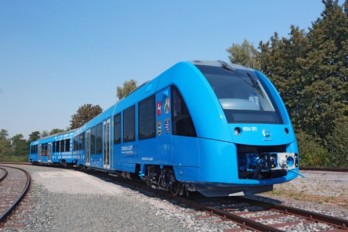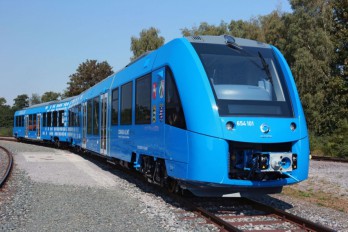London's first hydrogen filling station opened its gates

The hydrogen fuel station in Teddington uses excess or 'spare' electricity on the grid to generate industrial-scale electrolysis of water on-site
The hydrogen fuel station in Teddington uses excess or 'spare' electricity on the grid to generate industrial-scale electrolysis of water on-site
Electrolysis breaks down the water into its building block parts of hydrogen and oxygen, and the hydrogen is then stored under pressure. The fuel cell cars work by a process of 'reverse electrolysis' in that the hydrogen goes through a chemical reaction on a catalyst membrane in the car. This produces energy in the form of electricity which powers the electric motors. The remaining residue is pure water – created by the hydrogen and oxygen atoms re-uniting to form H2O. Refueling at the site takes about three minutes and fills the tank with 5kg of pressurized hydrogen at a cost of £10 per kg, providing a range of between 300 and 500 miles, depending on the car model. The station’s daily refuel capacity is 16 vehicles.
Source: Thisismoney
Source: Thisismoney
Media
Want to read more like this story?

Hydrogen and Nuclear Energy Unite to Cut Asphalt’s Carbon Footprint
Mar, 03, 2025 | NewsThe construction industry is taking a bold step toward sustainability with the introduction of nucl...

Australian researchers have developed a solar paint that turns water vapor into hydrogen
Sep, 18, 2017 | NewsIt draws moisture from the air, splitting it into oxygen and hydrogen, the cleanest source of energy...

Hydrogen in Action: Landmark Trial for Road Building
Jun, 11, 2025 | NewsThe UK’s journey toward low-carbon construction marked a significant milestone with the completion...

World's first hydrogen-powered passenger train will be launched in Germany next year
Oct, 21, 2016 | NewsCoradia iLint is a new CO2-emission-free regional train, providing an alternative to diesel power...

First Hydrogen-Powered train in the world launched in Germany
Oct, 03, 2018 | NewsThe first hydrogen-powered railway, introducing a more eco-friendly technology of transporting, was...

There is a new way to generate electricity from seawater
Jul, 28, 2016 | NewsScientists have used sunlight to turn seawater into hydrogen peroxide (H2O2), which can then be used...

March 22nd is World Water Day!
Mar, 22, 2015 | NewsSince 1993, the United Nations has designated March 22nd of each year as World Water Day, a day dedi...

SuntoWater generators produce 150-400L of potable water per day out of thin air
Mar, 06, 2017 | NewsThey can be powered by solar or solar plus grid power They can be powered by solar or solar plus...

Next generation reverse osmosis water purifier
Nov, 16, 2016 | NewsWaterO brings highly-filtered drinkable water to the kitchen table WaterO brings highly-filtered...
Trending

Vertical gardens in Mexico City to combat pollution

Saudi Park Closed After 360 Big Pendulum Ride Crashes to Ground, 23 injured

Characteristics of Load Bearing Masonry Construction

Taipei 101’s impressive tuned mass damper

Dutch greenhouses have revolutionized modern farming

Federal court rules Biden’s offshore drilling ban unlawful


